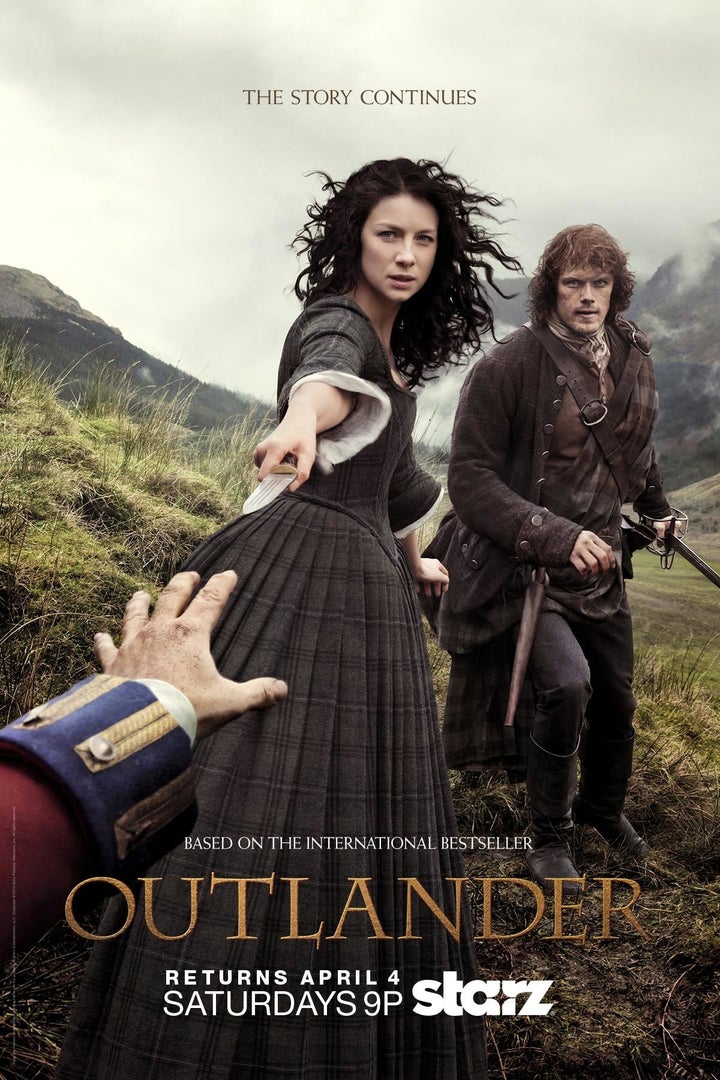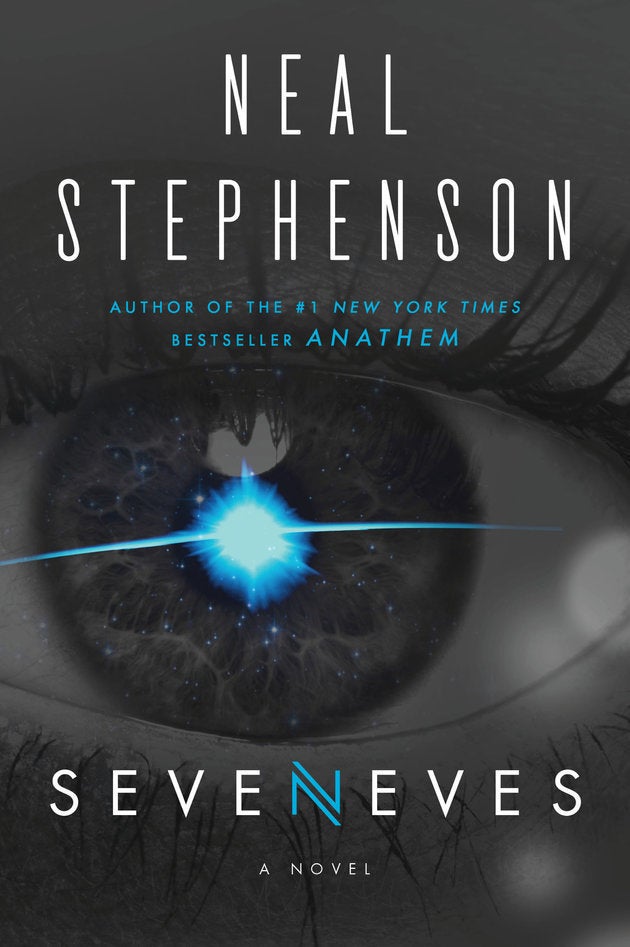

You can be highbrow. You can be lowbrow. But can you ever just be brow? Welcome to Middlebrow, a weekly examination of pop culture. Sign up to receive it in your inbox weekly.
It started as a fling. A friend introduced us, actually.
Spurned by a few moody fallouts and heartbreaking losses (when I said forever I meant it, “Freaks and Geeks”) I’d been avoiding the TV scene for months. It was time to focus on me. Previous tries at Netflix abstinence hadn’t lasted very long, but for once I was trucking along. I took walks! I kept plants alive! I baked pork loin! I started a yoga regimen led by a peppy YouTube instructor (namaste, Adrienne)!
So when a close friend who was staying with me suggested we stay in and watch a show, I was resistant. “Like, a show show?” I probably said. Kindly ignoring my haughtiness, she put on “Outlander.” Predisposed to hating it immediately, I hated it immediately, and fell asleep mid-pilot.
I complained later that the dialogue and tagline (“What if your future was your past?”) were cheesy. The entire premise -- a woman gets transported from 1945 to 1743, where she meets a handsome Scot and a devilish army officer who happens to look exactly like her erstwhile husband -- was too convenient, and seemed to be a device for allaying wives’ guilt about extramarital fantasies.
My adverse reaction wasn’t complicated. While I embrace the idea that so-called genre stories are as valuable as any other kind, both in books and on screen, I grew up loving sci-fi, not chick-lit. As a preteen I read Douglas Adams and Kurt Vonnegut, not Diana Gabaldon, the author of the '90s book series “Outlander” is based on.
I took pride in my tomboyish tastes, shaped as they were by my mom, who worked full-time and made sure I didn’t play house either. As a kid I was gifted rock tumblers that turned jagged stones into smooth pebbles and planetariums that flecked my bedroom ceiling with constellations. Toys that make you marvel at the blunt yet wondrous facts of the world. These, my family maintained, excluded Barbie dolls.
When I started reading and watching stories, it made sense that I was drawn to those rendered with the rigid lines of realism, even if their subjects were fantastical. Fine details captured my attention more than impressionistic strokes. That a "Star Trek" captain had to memorize the vernacular of a physicist was more interesting to me than how that captain related to her crew.
At some point -- probably after falling in love, with both characters and realer people -- I started to see beyond my myopic view of storytelling, growing to favor books and shows with heart to those with technical prowess or compelling theories.
Choosing to value “evocative” over “impressive” felt right to me, and in some ways more mature. But, growing up isn’t always linear. I’m still guilty of dismissing a girl-led musical about exes, opting to watch powerful men and women perform political theatre in Washington D.C. or Westeros. Probably influenced by which shows get the most critical acclaim, I’ll watch “House of Cards” or “Game of Thrones” instead of equally complex and beautifully shot shows about the interiority of romantic relationships. I’ll press pause to rant to my fiance about the lack of emotional nuance, the random nudity that’s touted as subversive.
Because of these frustrations, I decided to give “Outlander” another try. It’d gained a cult following, and seemed to be a Lite variety of Romance, one with an acumen for historical detail. This time, I wanted to like it. Like a first date with a Tinder match who wasn’t my type, it was rocky at first, but I reserved judgement, focusing instead on its good qualities: the moody, ethereal shots, the elegant costumes, the subtly communicative body language of actor Caitriona Balfe (who plays the lead, Claire Beauchamp).
I’ll spare you the Pride and Prejudice reference, but it seemed my first impression was wrong.
What first struck me as a pat premise was actually a simple story, one that left room for quieter, less plot-focused beauty. Much of the first season of “Outlander” centers on Claire’s attempt to return to the mysterious stones that cast her back in time, hoping that she can transport herself back to her own present day, and her husband. There are a few violent hangups -- she’s held prisoner by members of the Mackenzie clan who worry she’s a British spy, and is hunted by a violent, self-hating British army man, who questions her motives. But for the most part, the tension is created by just one narrative conflict.
The rest of the hour-long episodes are colored in with scenes of Highlander life. A boar hunt, a wedding, a tax-collecting mission, and an oath ceremony are shown in vivid detail. Because Claire views each of these ordinary activities as an opportunity to escape, they’re taut with potential energy, yet they’re pleasingly slow and character-driven. Even the show’s bloodier scenes are atmospheric, heightening the dizzying effects of gore.
At first I found these reenactments more pleasing to watch than the more intimate (read: Romance-y) exchanges. It’s easier to give yourself over to a story when the premise is calculated, taking a bird’s eye view of its characters, never getting close enough to reveal their multitudes. The usual hurdles -- forgiving a character her mess of human flaws, dispelling the icky feeling of embarrassment on behalf of someone else’s bald, unironic emotions -- just aren’t there. But as Claire let up on her plans for escape, growing to appreciate the Highlander way of life -- raw, wild, comically zealous -- I did, too.
It makes sense that the viewer’s emotional experience would match Claire’s. As an outsider -- a sassenach -- she seeks to understand her surroundings, not participate in the fraught power games herself. What begins as an anthropological examination of a distant culture softens into a story that allows viewers to love each of its characters.
Because of this, and because “Outlander” is narrated by Claire rather than presented in third person à la “Game of Thrones,” the sex scenes feel neither gratuitously icky or laugh-inducingly random. When Jamie, Claire’s floppy-haired Scottish lover and husband, tries to whip her as punishment for endangering the clan, I was not left gaping at his cold-heartedness. The brutal scene is couched in so much context -- Jamie’s conception of right and wrong has been shaped by his small social circle, one we’re now well acquainted with -- that it’d be impossible to leave the scene with a clear-cut opinion on his character. Later, Jamie concedes that he and Claire’s specific wants matter more than society's sexspectations (sorry), and they toy around with some new positions.
The show directly discusses the murky barrier between “good” and “evil,” one so many fantasy stories willingly maintain as solid. Reverend Reginald Wakefield, a friend of Claire’s 20th-century husband, tells him after an altercation, “It’s fashionable in this modern age to dismiss the idea of good and evil. But there is evil, and it finds purchase in good men, giving sin the sweet taste of ecstasy.”
Viewing morality as fluid rather than inherent is a virtue of even the most formulaic romance novels, the predominant formula being: girl meets “bad boy,” girl wins over “bad boy,” “bad boy” is bad no more. This particular type of moral transformation may be nothing more than a fun fantasy to entertain, but still, it’s more empathy-making than tales of justice-inspired schemes.
Good versus evil isn’t the only unfair and uninteresting spectrum romance writers can hope to debunk. There are others -- highbrow versus lowbrow, critically acclaimed versus schmaltzy -- overdue for a shakeup. I’m certainly biased, smitten as I am, but I think “Outlander” could be the show to turn the tide. It may be outnumbered, but boy, it has heart.

